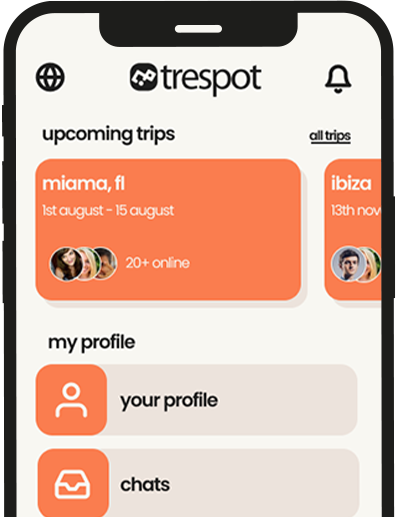Introduction: Why Cruise Ship Hacks Matter
If you’ve ever stepped onboard and thought, “There must be smarter ways to do this,” you’re right. The best cruise ship hacks blend insider tactics with line policies, health guidance, and a few clever gadgets. In this guide, you’ll learn how to choose money-saving packages (or skip them), organize tiny cabins like a pro, master ship time so you never miss all aboard, handle tender-port logistics, and navigate streamlined e-muster drills. We’ll also cover the Starlink-powered Wi-Fi era, evidence-based seasickness strategies, and smart ways to plan travel meetups at sea. Each section is built for travelers, the travel community, and groups—rooted in current practices so you can cruise confidently.
1) Plan Like a Pro: Timing, Documents & a One-Night Buffer
The cheapest “insurance” you can buy: arrive in the departure city one day early. Flight delays, traffic, and weather happen—the ship won’t wait. Keep passports, visas, vaccine documents (if required), insurance, and confirmations in a cloud folder with offline copies. Pack a carry-on embarkation kit (meds, swimwear, sunscreen, hat, charger, light sweater). Checked bags may not reach your cabin for hours.
2) Cabin Zen: Magnetic Hooks, Organizers & Layout Wins
On many ships, cabin walls and doors are metal. Bring a few magnetic hooks (varied pull strength) to hang day-packs, lanyards, hats, and wet gear. A soft over-the-door organizer corrals toiletries and cables in small bathrooms, while a foldable mesh hamper keeps floors clear. Unpack fully, stow suitcases under the bed, and use a magnet board for the daily planner and excursion tickets.
- Use non-marring hooks or felt pads to protect doors.
- Color-code packing cubes: sea days vs city days.
- Set a “grab-and-go triangle”: door hook (hat/lanyard), shelf (sunscreen/card), fridge (water).
3) Power & Charging: What You Can (and Can’t) Plug In
Policies vary by cruise line. Some allow non-surge-protected power strips; others prohibit power strips entirely but allow multi-port USB chargers. Bathroom outlets often only support electric razors—plan to charge at the desk. If you use CPAP/medical gear, arrange support in advance with the line’s accessibility team.
4) Connectivity Hacks: Ship Wi-Fi, Starlink & Phone Settings
To avoid roaming bills, board with airplane mode ON and Wi-Fi ON. Many fleets have upgraded to Starlink, bringing noticeably faster speeds than pre-2023 eras (performance still varies by ship/region). For meetups, prepare a shared offline kit—PDF port maps, contact cards, and the ship’s port agent details—so your group stays coordinated even if Wi-Fi hiccups.
- 48h: verify seats, download apps, enable push alerts.
- 24h: check-in, screenshot boarding passes & dining/excursions.
- Day-of: confirm ship time, monitor wait & ops updates.
5) Drink Packages: Run the Breakeven Math
Alcohol packages can run ~$80–$105+ pppd on mainstream lines. They’re worth it only if your real consumption beats the daily price—especially considering port days. Many lines require all adults in a cabin to buy if one buys. Alternatives: refreshment/soda packages, bar tabs (where offered), and à-la-carte with a couple of splurge nights. Some lines permit a limited amount of BYO wine (check current rules; corkage may apply).
6) Dining Plays: Main Dining vs Specialty & First-Night Deals
Specialty venues often have more availability—and occasionally incentives—on night one. Unlimited or 3–4-night packages can save meaningfully if you book during planner sales. Reserve early via the app; if not available, head to a host stand right after boarding to line up prime times for the week. For variety without overspending, try a port-day lunch at a specialty restaurant (often quieter) and classic main-dining dinner.
7) Health & Seasickness: Evidence-Based Prevention
Handwashing beats sanitizer for norovirus prevention—soap and water, especially before meals and after restrooms. For motion sickness, talk to your clinician about proven options (e.g., scopolamine patches or first-gen antihistamines) and combine with low-risk tactics: fresh air, stable gaze, small bland snacks, hydration. Choose mid-ship, lower-deck cabins if you’re sensitive to motion.
- Tiered kit: ginger chews → sea bands → OTC meds → Rx patch (if needed).
- Carry electrolytes; keep a light snack routine on rough sea days.
8) Port Days: Ship Time, All-Aboard & Tender-Port Tactics
Ship time may not match local time. Set a watch to ship time and ignore your phone’s auto-switch. All aboard typically closes 30–60 minutes before sail-away; on busy or tender days, start heading back with a buffer. Popular tender ports (e.g., Santorini, Mykonos, Grand Cayman, Cabo) require extra margin and patience. Screenshot the daily planner with the port agent phone and last tender time.
9) Excursions: Book with the Line or Independently?
Line-booked tours are convenient and vetted, and the ship waits for delayed ship-sponsored excursions. Independent tours can be cheaper and more niche, but you’re responsible for getting back on time (and the ship likely won’t wait). For groups, split the strategy: choose ship tours for long-distance or tender-port days, and independent options for close-in city walks.
10) Packing Light: Laundry, Carry-On Strategy & Safety Stash
Don’t overpack. Many ships have self-service launderettes or paid next-day laundry. If possible, go carry-on only (faster boarding, fewer lost-bag worries) and keep a first-night kit in your personal item. Build a safety stash: mini medical kit, backup cards in a separate wallet, ID copies, and a waterproof pouch for tender transfers.
11) Safety & e-Muster: On-Board Smarts
Many lines now use streamlined e-muster: watch a short video/app briefing, then check in at your station (still mandatory). Onboard, avoid real-time geotagging, memorize stairwells, and keep a compact flashlight by the bed. If you feel unwell, notify medical and follow isolation guidance.
12) Money Moves: Loyalty, OBC, FCC & Insurance
A cruise-savvy travel advisor can unlock perks like onboard credit (OBC) and help if irregular ops hit. Link a rewards card that bonues travel/dining for extra points. Travel insurance matters—from medical/evacuation to missed connections. If you’re loving the sailing, check future cruise offers (reduced deposits, OBC); take a photo of the terms and calendar a review before final payment.
13) Community & Meetups: Make Friends Without Awkwardness
Use low-friction anchors: free walking tours, line-organized mixers, or interest meetups (photography, salsa, language exchange). Leave a friendly “join us at X bar, 6 pm” note on your cabin door with a magnet for new friends. On sea days, host a port debrief circle to swap photos, coordinate ride shares, and share your best cruise ship hacks.
Quick Takeaways
- Arrive a day early—the ship won’t wait.
- Cabin space multiplies with magnetic hooks + over-door organizer.
- Power rules differ: some lines allow non-surge strips, others don’t—check before packing.
- Airplane mode + ship Wi-Fi; Starlink is improving speeds across many fleets.
- Handwashing beats sanitizer; use a tiered seasickness plan.
- Mind ship time & tenders—set a return alarm.
- Do the drink-package math; consider lighter options or bar tabs.
Conclusion
Your smartest cruise ship hacks aren’t gimmicks—they’re a system: arrive early, respect ship time, stack the right tech (apps, screenshots, offline kits), and make tiny spaces work harder with magnets and organizers. Add data-driven choices—breakeven math for drink packages, Starlink-era Wi-Fi habits, and CDC-style health basics—and you’ll save time, money, and stress while building better memories.
Share these hacks with your travel group, test two or three on your next sailing, and iterate. The more you cruise like a community, the smoother it gets—for you and the next traveler you inspire on deck at sunset.
FAQs — Cruise Ship Hacks
Share Your Best Cruise Ship Hack
Was this helpful? Drop your #1 cruise ship hack in the comments—what saved you the most time, money, or stress? If this guide helped, share it with your travel group or meetup so everyone sails smarter.
References
- TSA — What Can I Bring (3-1-1 basics for flights to embark)
- CDC Yellow Book — Cruise Ship Travel & Motion Sickness
- CDC — Handwashing & Norovirus Prevention
- Royal Caribbean — Prohibited Items (power/extension policy)
- Carnival — Electrical Outlets & Power Strips
- Starlink — Maritime & Roam (industry context)
- Cruise Critic — What Is Ship Time?
- The Points Guy — Cruise Tips & First-Timer Guides
- The Points Guy — Guide to Cruise Drink Packages
- Condé Nast Traveler — Cruise Packing Essentials
We synthesized practical advice from official health guidance, cruise-line policies, and reputable travel publications to build a 2025-ready playbook.



